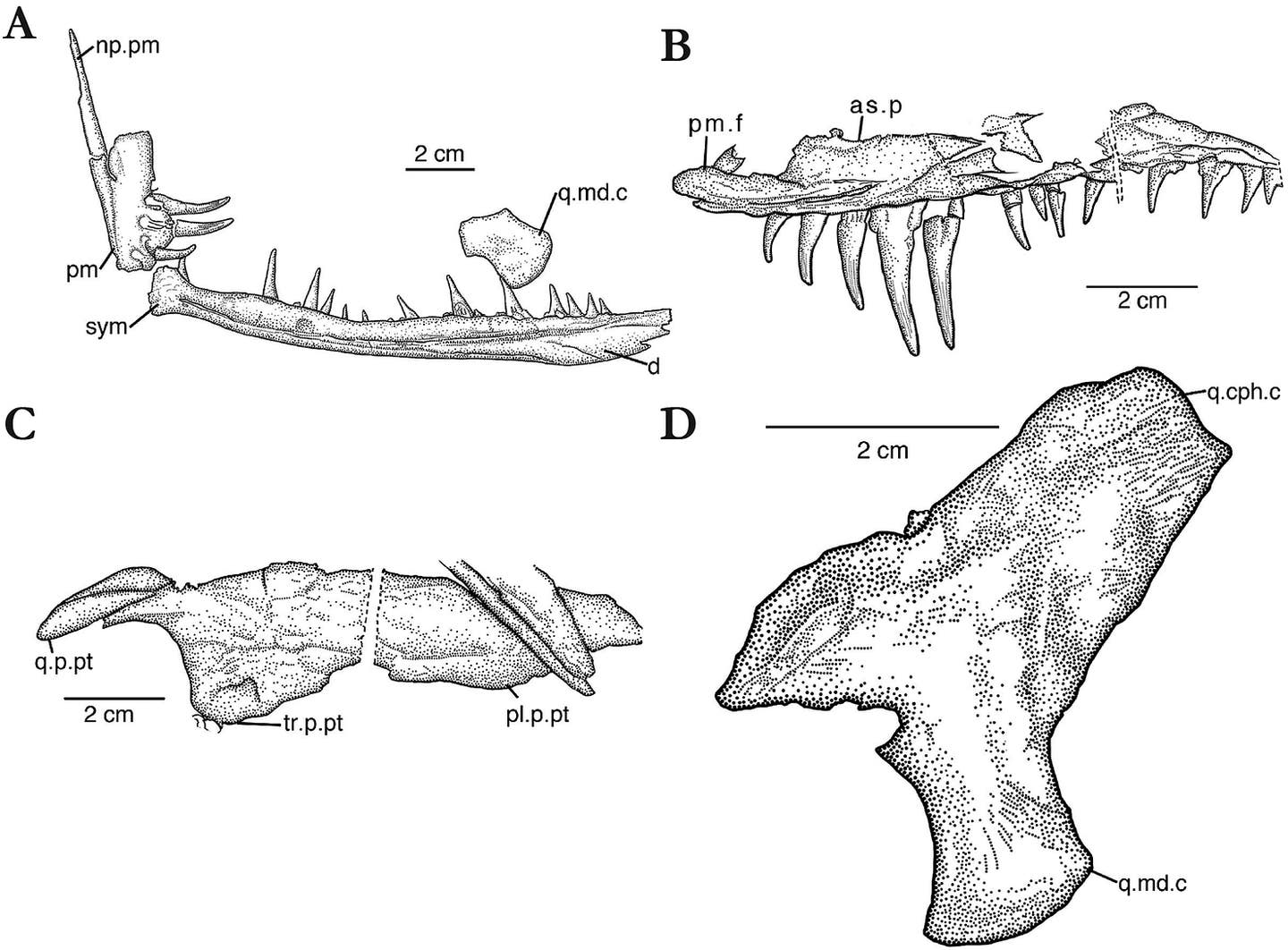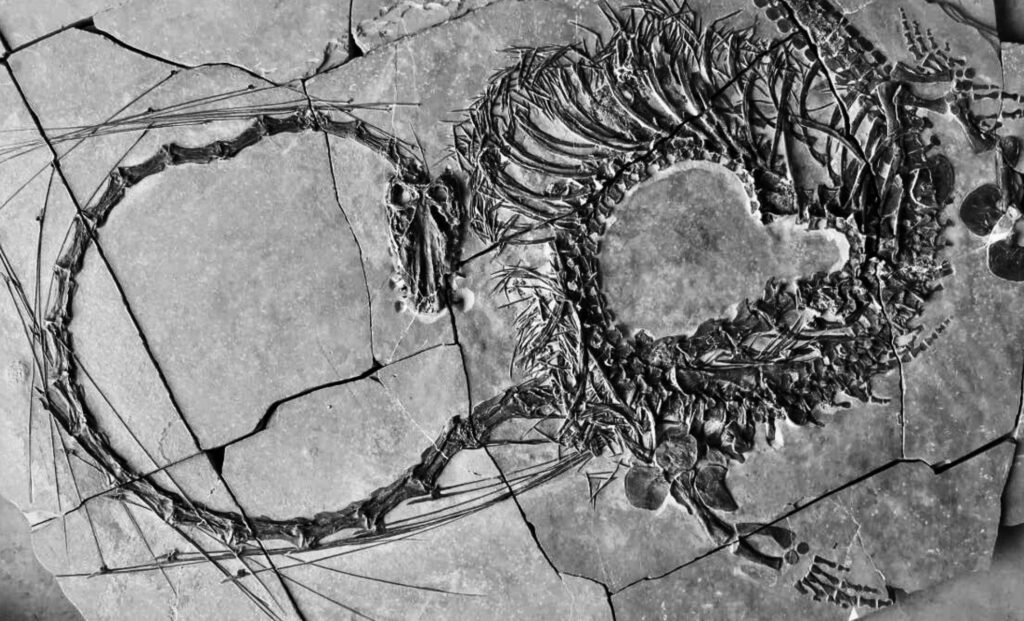In the southern province of Guizhou, China, paleontologists have uncovered an extraordinary fossil that offers a rare glimpse into the deep past. The discovery, of a nearly complete skeleton stretching about 16 feet, belongs to dinocephalosaurus orientalis, a marine reptile that lived approximately 240 million years ago during the Triassic period. Its elongated, snake-like body and dramatically long neck have drawn comparisons to the legendary Chinese dragon.
The specimen was found in Guizhou Province, a region known for its rich Triassic fossil deposits. While the species was first described in 2003 by a scientist named Li, this newly discovered fossil is the most complete example yet, providing unprecedented insight into the creature’s full anatomy and lifestyle.
An Unusual Approach to an Elongated Neck
What sets dinocephalosaurus orientalis apart from other long-necked marine reptiles is the way its neck developed. Instead of simply stretching existing vertebrae, the animal added more neck vertebrae—32 in total—which make the neck longer than the combined length of its body and tail. This unique skeletal structure resulted in an exceptionally flexible neck, which researchers believe played a key role in how the animal hunted and navigated its marine environment.
The creature’s body was sleek and adapted for life in water, with limbs shaped like paddles that likely made it an efficient swimmer but limited its mobility on land. Fossil evidence, including fish remains preserved in the stomach region, confirms that this reptile was a predator specialized in capturing prey underwater.

Reclassifying an Ancient Marine Reptile
In 2021, after further analysis, scientists placed dinocephalosaurus orientalis in a newly defined family called Dinocephalosauridae. This classification highlights how distinct the species is from other related reptiles such as Pectodens, emphasizing its unique evolutionary path. The discovery of the complete skeleton has given researchers a fuller understanding of this lineage and how it fits into the broader picture of marine reptile evolution during the Triassic.
Nick Fraser, head of the National Museum of Scotland’s Department of Natural Sciences, expressed his fascination, saying, “This discovery allows us to see this remarkable long-necked animal in full for the very first time. It is yet one more example of the weird and wonderful world of the Triassic that continues to baffle palaeontologists. We are certain that it will capture imaginations across the globe due to its striking appearance, reminiscent of the long and snake-like, mythical Chinese Dragon.”


International Cooperation in Uncovering Ancient Mysteries
The research team that examined the fossil involved an international collaboration. Professor Li Chun from the Institute of Vertebrate Paleontology and Paleoanthropology in Beijing noted, “This has been an international effort. Working together with colleagues from the United States of America, the United Kingdom and Europe, we used newly discovered specimens housed at the Chinese Academy of Sciences to build on our existing knowledge of this animal.”
Among the many remarkable fossil finds in Guizhou Province from the Triassic, dinocephalosaurus orientalis stands out, according to Chun, as perhaps the most extraordinary. The specimen’s preservation offers paleontologists an exceptional opportunity to study an animal whose anatomy and behavior remain only partially understood.


Stephan Spiekman, a postdoctoral researcher at the Stuttgart State Museum of Natural History, expressed hope that continued research would clarify the evolutionary role of this family of reptiles, especially concerning the function and advantage of its extraordinarily long neck. A study published by Cambridge University Press suggests the neck was crucial for feeding, but the exact feeding strategy remains a subject of scientific inquiry.
The discovery provides an important window into a world shaped by unusual and specialized life forms, reflecting the diversity of marine ecosystems in the Triassic era. The detailed anatomy of dinocephalosaurus orientalis, from its 32-neck vertebrae to its paddle-like limbs, enriches the scientific understanding of how some prehistoric creatures adapted to their aquatic environments.

